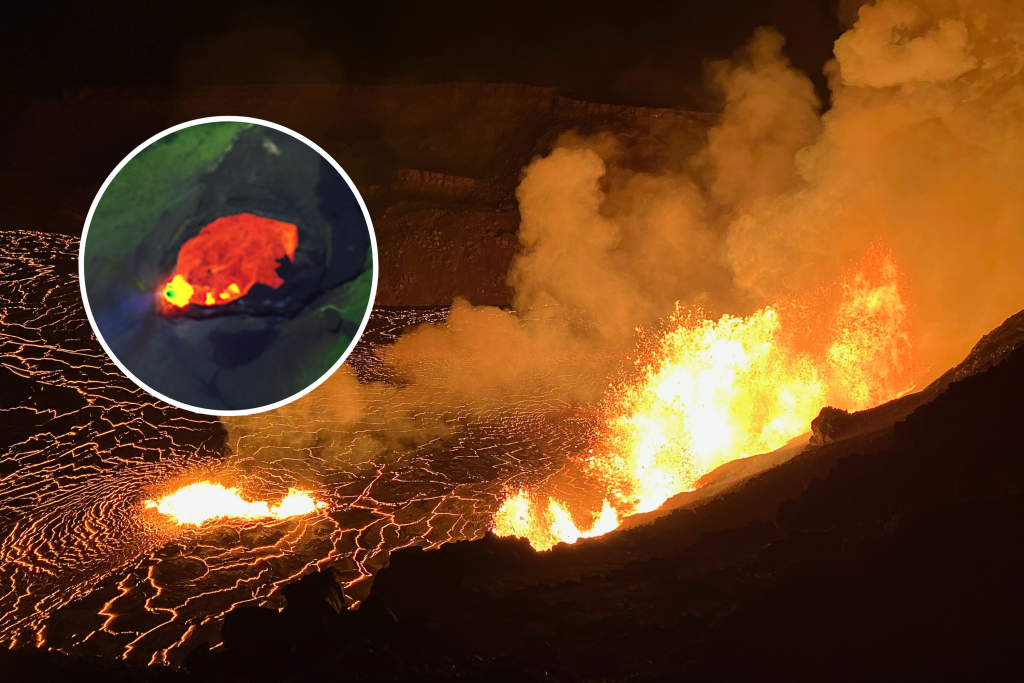After three months of dormancy, Hawaii’s Kīlauea volcano erupted dramatically on December 23, 2024, spewing fountains of lava from fissures near the southwest wall of Halemaʻumaʻu crater. Kīlauea is one of the world’s most active volcanoes, and its eruptions impact local communities and ecosystems due to the release of volcanic gases, such as sulfur dioxide, creating a toxic haze known as vog. Understanding Kīlauea’s dynamic activity helps scientists improve predictions for future eruptions and assess global volcanic processes.
An image released by the NASA Earth Observatory from Landsat 8 captured vivid false-color images of the ongoing eruption at Kīlauea on December 24, 2024. The eruption marked the sixth event within the summit caldera since 2020. The lava fountains soared up to 300 feet in height, rapidly spreading over 650 acres with an average depth of 10 feet. The eruption has cycled through multiple episodes of activity and pauses, with the U.S. Geological Survey reporting active eruptions as of January 3, 2025. The eruption began after magma chambers beneath Kīlauea showed increased pressurization in late 2024.
The alternation of inflation and deflation in the magma chambers at Kīlauea has caused the eruption to pause and resume multiple times. Scientists hypothesize that variations in lava gas content and drainback dynamics are driving these stop-and-start patterns. The satellite image rendered in false color highlights the infrared signature of the fresh lava, appearing vividly in shades of red and yellow. Volcanic gases are also visible in the satellite imagery drifting southwest of the caldera, highlighted in blue. The eruption has shown moderate levels of activity after two pauses, with high levels of volcanic gas being continuously released.
The USGS Hawaiian Volcano Observatory provided an update on the ongoing eruption at Kīlauea, stating that it is the sixth eruption within the caldera since 2020. The eruptions in the summit region have varied in duration from about a week to over a year. The current eruption started with vigorous lava and volcanic gas emission but has paused twice, showing moderate levels of activity as of January 3. The primary hazard of concern is the high levels of volcanic gas, including water vapor, carbon dioxide, and sulfur dioxide, which can have far-reaching effects downwind, creating volcanic smog known as vog.
As of January 3, Kīlauea remains in its third eruption episode, with continued monitoring by USGS. The volcano’s activity is expected to proceed with further pauses and resumptions, with researchers focusing on unraveling the interplay between gas content, magma pressure, and lava flow dynamics. Residents and visitors are advised to stay informed through updates from USGS, as volcanic gases and potential lava flows remain significant hazards. For those with tips on science stories or questions about volcanic eruptions, they can reach out to Newsweek via [email protected].













